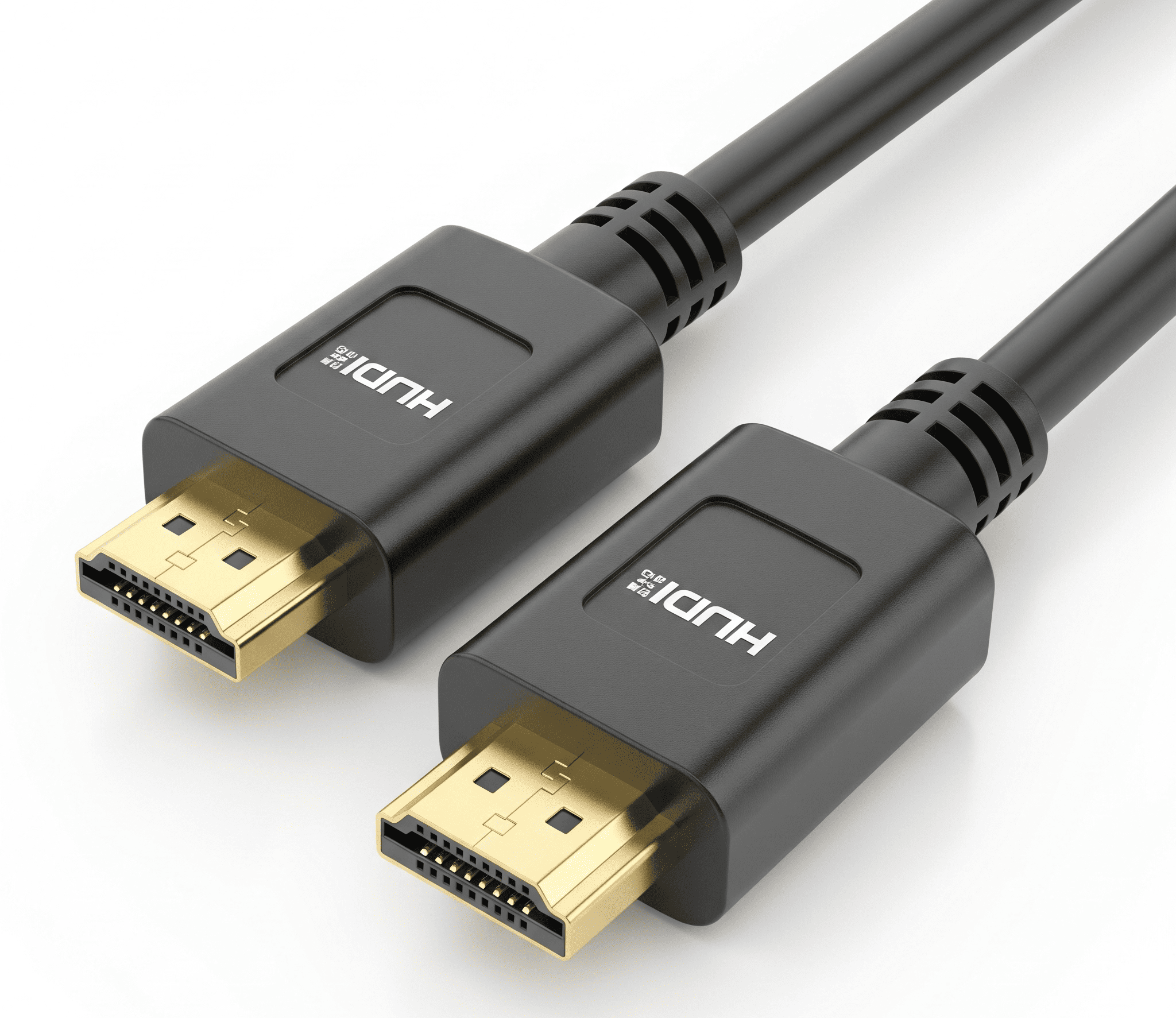Kingsgrove Branch:
DisplayPort to HDMI

DisplayPort to HDMI: Navigating the visual connection world can be a bit tricky, especially when dealing with different types of devices. This guide will break down the essentials, from understanding the adapters to troubleshooting any connection snags
This comprehensive overview will cover everything from the basics of DisplayPort to HDMI adapters to practical tips on choosing the right one for your needs. We'll delve into the technical aspects, including signal transmission and compatibility, and explore different adapter types. You'll also find a practical guide on using these adapters, including a troubleshooting section to address common connection issues
We'll look at compatibility, sourcing options from a trusted retailer, alternative solutions, future trends, and wrap it all up with a look at common problems and how to fix them
DisplayPort to HDMI Adapters: A Comprehensive Guide
DisplayPort to HDMI adapters are a handy tool for connecting devices with DisplayPort outputs to displays using HDMI inputs. They bridge the gap between different video interfaces, allowing you to use your high-resolution monitor or TV with a laptop or other computer that has a DisplayPort connection
Introduction to DisplayPort to HDMI Adapters
DisplayPort to HDMI adapters are essentially translators. They take the signal from a DisplayPort source (like a laptop or desktop PC) and convert it into an HDMI signal that your display can understand. This allows you to connect devices with different video interfaces without needing separate cables or adapters for each. Common use cases include connecting a laptop to a TV for presentations or connecting a high-end gaming PC to a modern monitor
The conversion process involves taking the DisplayPort signal, decoding it, and then re-encoding it into a compatible HDMI ARC format. The adapter ensures that the resolution and refresh rate are compatible between the source and the display
Choosing the Right DisplayPort to HDMI Adapter
When selecting a DisplayPort to HDMI adapter, several factors are crucial. Resolution and refresh rate support are key. A higher resolution and refresh rate usually mean better image quality, but you need to ensure that your display and source device support those specs. Consider the devices you plan to connect. If you're connecting a high-performance gaming PC, you'll want an adapter that supports high refresh rates
Active adapters usually offer better performance and compatibility than passive ones. Active adapters provide amplification and signal processing, while passive adapters simply pass the signal through. Passive adapters are often more budget-friendly, but active adapters may be necessary for certain high-resolution or high-refresh-rate setups
| Adapter Type | Resolution Support | Price Range |
| Passive | 1080p, 1440p (sometimes) | $10-$30 |
| Active | 4K, 144Hz refresh rate (often) | $30-$80 |
Using DisplayPort to HDMI Adapters
Connecting a DisplayPort source to an HDMI display is straightforward. Connect the DisplayPort cable from your source device to the adapter, and then connect the HDMI cable from the adapter to your display. Then, adjust the display settings on your source device to ensure compatibility with the display's resolution and refresh rate
DisplayPort to HDMI Adapter Compatibility
Compatibility is vital. Check the specifications of both your DisplayPort device and your HDMI display to ensure compatibility. Resolution and refresh rate limitations can lead to issues, like blurry images or dropped frames. Always verify compatibility before purchasing
| Device Type | Compatibility Notes |
| Laptops (High-end) | Generally compatible, but check the specific model and supported resolutions |
| Laptops (Budget-friendly) | May have lower resolution/refresh rate limits |
| Monitors (High-end) | Typically support higher resolutions and refresh rates |
| TVs (modern) | Often compatible with high-resolution signals, but check the input capabilities |
Product Sourcing from schnap.com.au
schnap.com.au offers a variety of DisplayPort to HDMI adapters. Their selection includes both active and passive adapters, covering various price points and features. Be sure to check their website for detailed product specifications and pricing. Schnap.com.au's website typically lists the features and benefits of each product. Comparing their adapters to those from other retailers can help you find the best value
Alternative Solutions
Alternative solutions exist, like using a different cable or adapter. For example, you could try using a DisplayPort to DisplayPort cable and a separate HDMI to DisplayPort adapter, which might be necessary in cases of limited DisplayPort output capabilities. Each option has its own tradeoffs in terms of cost, performance, and compatibility
Future Trends
DisplayPort and HDMI technologies are continually evolving. Expect to see increased resolution and refresh rate support in future adapters, potentially impacting current display technology by allowing for even more dynamic and detailed visual experiences
Common Issues and Solutions
Common issues include a lack of signal, incorrect resolutions, or display issues. A faulty adapter, incorrect settings on your display or source device, or incompatible equipment are possible causes. Troubleshooting steps often involve checking connections, verifying settings, and ensuring device compatibility
Closure
In conclusion, DisplayPort to HDMI adapters are a valuable tool for bridging the gap between various display technologies. By understanding the intricacies of selection, connection, and compatibility, you can ensure a smooth visual experience. Remember to check the specifications and compatibility tables to avoid potential issues. Choosing the right adapter and knowing how to troubleshoot common problems are key to maximizing your visual output
Hopefully, this guide has provided a clear path forward. Happy connecting
FAQ Explained: Displayport To Hdmi
What are the common issues users face with DisplayPort to HDMI adapters?
Common problems include no signal, incorrect resolution, or the adapter not being compatible with the source device or display. Faulty adapters or incorrect settings can also cause these problems. We'll cover these issues and their solutions in detail
What are the key differences between active and passive DisplayPort to HDMI adapters?
Active adapters have their own power source, enabling them to handle more demanding signals, often with higher resolutions or refresh rates. Passive adapters, on the other hand, rely on the source device for power, making them more affordable but potentially less versatile
What are some alternative ways to connect DisplayPort to HDMI?
Alternative methods include using a different type of cable or adapter, such as a DisplayPort to DVI or VGA adapter, or in some cases, a different connection method altogether. We'll explore the pros and cons of these methods, as well as their limitations
How do I choose the right DisplayPort to HDMI adapter for my needs?
Consider the resolution, refresh rate, and supported devices when selecting an adapter. Always check the specifications of both your source device and display to ensure compatibility. Read reviews and compare prices from different vendors. Don't hesitate to consult our guide for a more in-depth discussion
Recent posts

Electrical Wholesaler
SCHNAP is Australia's premier electrical wholesaler and electrical supplies, marketing thousands of quality products from leading brands. Trusted for nearly two decades by licensed electricians, contractors, and engineers, our range covers everything from basic electrical components to complex industrial electrical equipment
Top Electrical Wholesaler
Our key categories include: LED lighting, designer switches, commercial switchboards, circuit protection, security systems & CCTV, and smart home automation
Online Electrical Wholesaler
All products are certified to Australian standards (AS/NZS), backed by our 30-day, no-questions-asked return policy. Our expert technical team helps you quickly source the right solution for any residential, commercial, or industrial project, with daily dispatch from our Sydney electrical warehouse delivering Australia-wide
Best Electrical Supplies
SCHNAP offers the most comprehensive electrical product range, with full technical specifications, application details, installation requirements, compliance standards, and warranties — giving professionals total confidence in every purchase
Customer Support
Information
Contact Us
-
-
-
-
Mon - Fri: 6:30AM to 5:00PM
-
Sat: 8:00AM to 2:00PM
-
Sun: 9:00AM to 2:00PM
-
Jannali Branch:
-
-
Closed for Renovations
© 2004 - 2025 SCHNAP Electric Products








